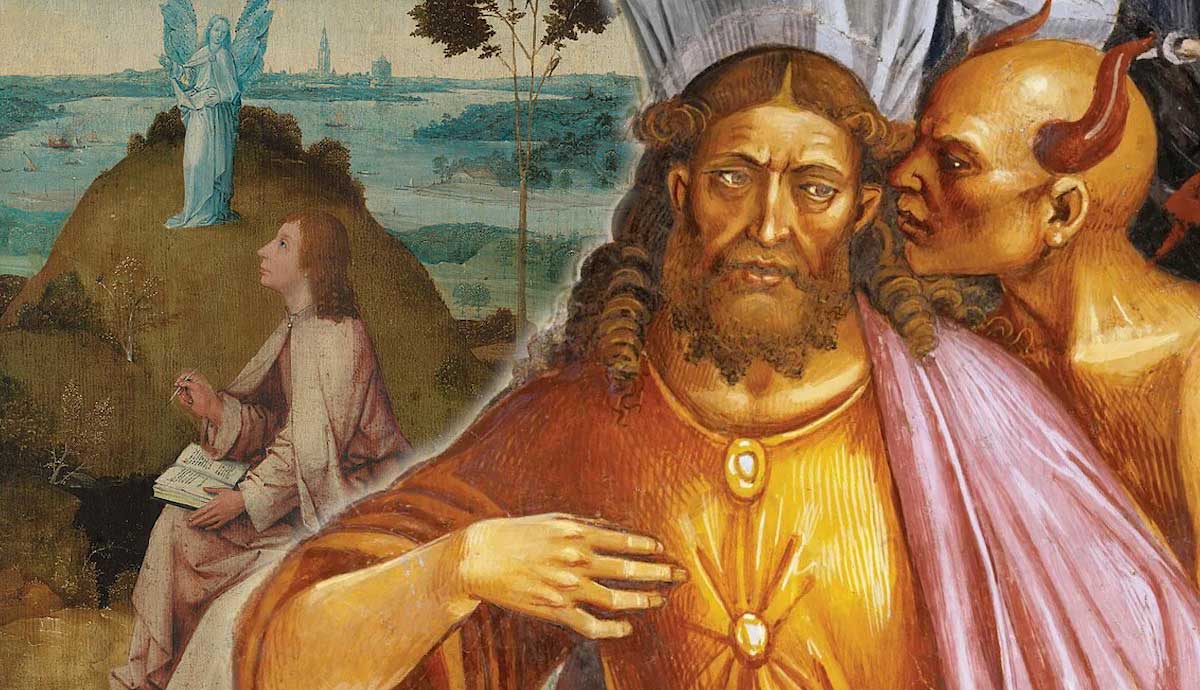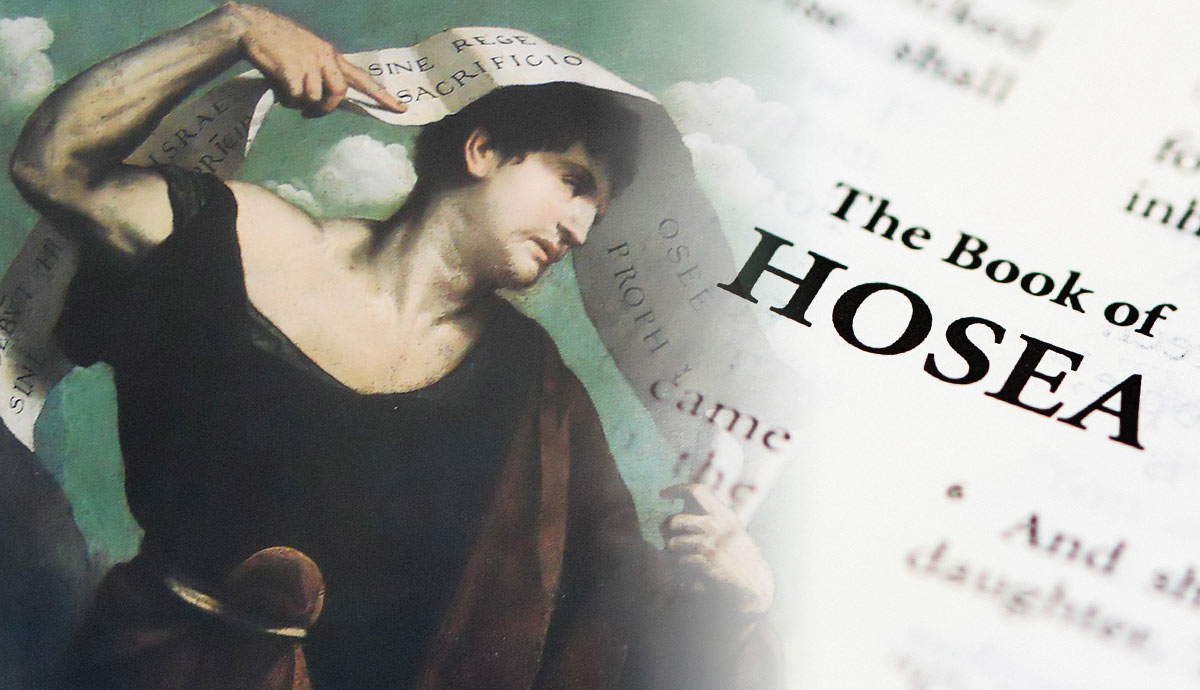
The Book of Revelation is arguably the most difficult of the New Testament books to interpret. It is filled with horsemen, beasts, a harlot, and a dragon. It almost sounds like fiction fantasy. Some even claim Revelation cannot be understood. But why would a book that cannot be understood be called Revelation? Let’s investigate…
What is the Book of Revelation?

The Book of Revelation is probably the most enigmatic in the New Testament. Many people avoid reading it because it does not make sense to them. Others interpret Revelation according to what they read in the newspapers. They assign labels like “antichrist” to whoever is the latest villain on the world stage. Scholars recognize four methods for interpreting the Book of Revelation. Each interpretive method results in divergent identifications of key figures in the book.
The four interpretive approaches to Revelation are historicism, the preterist view, futurism, and idealism. Historicism sees the visions of Revelation as a roadmap of world history from the time of Christ to the establishment of God’s kingdom. The preterist view interprets Revelation as a description of events primarily fulfilled in the author’s time. Futurism teaches that the prophecies of Revelation 4 and onward deal with future events relating to the end time. Idealism has a different view. According to Idealism, Revelation speaks to principles in the battle between good and evil. These principles are universal and thus applicable to all ages. These approaches result in different interpretations of the characters and events John describes. The implications and relevance of the book for a contemporary audience change accordingly.

1. A Historicist Reading of Revelation

The historicist reading of Revelation sees a strong relation between the prophecies of Daniel 2, 7, 8 and 9 and that of Revelation. Historicists interpret the imagery of Revelation via allusions and symbols from Old Testament prophetic texts.
This method of interpretation, at least as far as the Old Testament prophecies of Daniel are concerned, can be traced back to the early Church Fathers. It became the primary method of interpreting Revelation during the Reformation. Almost all the Reformers, like Jan Huss, Martin Luther, and John Calvin, subscribed to this method of interpretation. It resulted in the identification of the Pope or Papacy as the antichrist.
According to historicist interpretation, the symbols of Revelation describe seven ages of the Christian church. It details the fall of the Western Roman Empire as its territory fell to various pagan nations. The rise of the Roman Catholic Church from the ashes of the Roman empire features prominently. The persecution of Protestants by the Papacy is also a central theme.
This method of interpretation views Revelation as descriptive of significant events throughout the entire scope of history. The period stretches from the Resurrection of Christ to the creation of the new heaven and earth. Interpreters assign different events and identifications to its symbols.
The abuse of this method of interpretation has resulted in tragedies like the Waco siege in Texas in 1993. It is imperative, however, not to stereotype the method of interpretation based on its abuse by fringe groups. Bible students should evaluate every method of interpretation on its own merits because each has its own strengths and weaknesses.
2. A Preterist Reading of Revelation

The Preterist interpretation of Revelation sees the events described in the book as fulfilled between the resurrection of Jesus (around 31 CE) and the fall of Jerusalem (70 CE). Church historians believe preterist interpretation developed as a response to historicist interpretation. One aim it pursues is to point the finger away from the Pope or papacy as the antichrist. Instead, adherents present a few alternatives, such as Antiochus IV Epiphanes or Emperor Nero.
A Jesuit priest, Luis de Alcazar (1554-1613), developed the preterist approach. It has many adherents among contemporary scholars. However, Preterist interpretation also receives opposition from many scholars for various reasons. The date generally assigned to John’s authoring of the book of Revelation is around 90 CE. This late date falls outside the preterist framework for fulfillment of Revelation.
Some preterists thus attempt to ascribe an earlier date for John’s Revelation. Another way to address this challenge manifests as a mild or partial preterist interpretation. The full or consistent preterist view holds that prophecies from Revelation may have had bearing on Jerusalem (70 CE) or the fall of Rome (476 CE).
However, neither the destruction of Jerusalem nor the fall of Rome seems a good fit for the decisive victory that Revelation 19 portrays. Nevertheless, to preterists the purpose of the book is to encourage believers to persevere and endure with the assurance that God will judge their persecutors.
3. A Futurist Reading of Revelation

Futurism also developed as a counter to the historicist interpretation of prophecy. Francisco Ribeira laid the foundations for this view in the mid to late 1500s, and Cardinal Bellarmine and Manuel Lacunza contributed significantly to its later development. The futurist interpretation of prophecy sees most of Revelation play out shortly before, during, and after the second coming of Christ.
Some scholars have argued that the Church Fathers show evidence of futurist interpretation in their works. They speak of events that must be fulfilled some time in their future. That does, however, not mean they adhered to futurism because it has not been developed as an interpretive framework yet. Their views could also align with historicist interpretation.
Arguably, the most notable feature of futurist interpretation is the rapture. This event sees believers raptured from the earth with resurrected believers at the second coming. This view gained popularity after the Left Behind series by LaHaye and Jenkins was released. Two movie versions of the book Left Behind saw the light of day. One was a Hollywood production featuring Nicolas Cage.

Three distinct views on the rapture developed. The pretribulationist view teaches that believers will be raptured before the tribulation starts. Mid-tribulationists believe the rapture occurs three and a half years after the tribulation begins but before the three and a half years of the great tribulation starts. Post-tribulationists claim everyone goes through tribulation, but eventually, God will rapture only believers. The tribulation refers to a time that the Antichrist and his minions will persecute Christians.
One significant criticism of the futurist interpretation of prophecy is that the Book of Revelation would have been rendered irrelevant to the first-century audience as it would speak primarily of events the readers would not understand nor experience. These events would only occur almost 2,000 years or more after they have passed.
4. An Idealist Reading of Revelation

Idealism sees Revelation as an allegory. Idealists spiritualize the imagery that Revelation presents. They do not consider any content of the Book of Revelation as a reference to literal events. The book presents a continuing battle between God and Satan, or good and evil. None of the content is associated with historical events, the present, or the future. All the content of Revelation is relevant to the reader irrespective of the time they live in.
To idealists, Revelation is about principles rather than incidents. As such, Idealists deny that Revelation presents the fulfillment of prophecy. Idealism is prone to subjective and arbitrary interpretation, a feature common to any allegorical interpretation of Scripture.
There is no consummation of the historical process and no literal return of Christ. In a sense, the Bible is left open-ended. The promises of Christ’s return described in the Gospels, Acts, and many of the epistles do not realize. According to Idealism, there is not much of a revelation of Jesus Christ in the book of Revelation.
Interpretive Methods

It is important to note that none of these interpretive methods exclusively aim to interpret the Book of Revelation. Many of the conclusions drawn from these methods come from the culmination of interpreting several prophetic passages from books such as Daniel, Ezekiel, Isaiah, Matthew, and 2 Thessalonians. These books inform each other and are used along with Revelation to establish a view of end-time events.
It is also imperative to recognize that none of these interpretive frameworks result in a uniform view. There are many differing events and identities that various expositors assign even when they use the same method. It is often these differing interpretations stemming from the same method that undermine the credibility of each method. Each of the four methods have multiple interpretations presented by adherents of each.
Conclusion

There are four recognized methods for interpreting Revelation: the historicist, preterist, futurist and idealist method of prophetic interpretation. Each method resulted in several interpretations of the imagery the Book of Revelation presents. Each method has its weaknesses.
In the end, the three former interpretive methods present a more satisfactory conclusion to the Bible narrative than the Idealist method. It is up to the Bible student to study and evaluate for him or herself which method makes the most sense in the light of what the Bible and history reveal.










